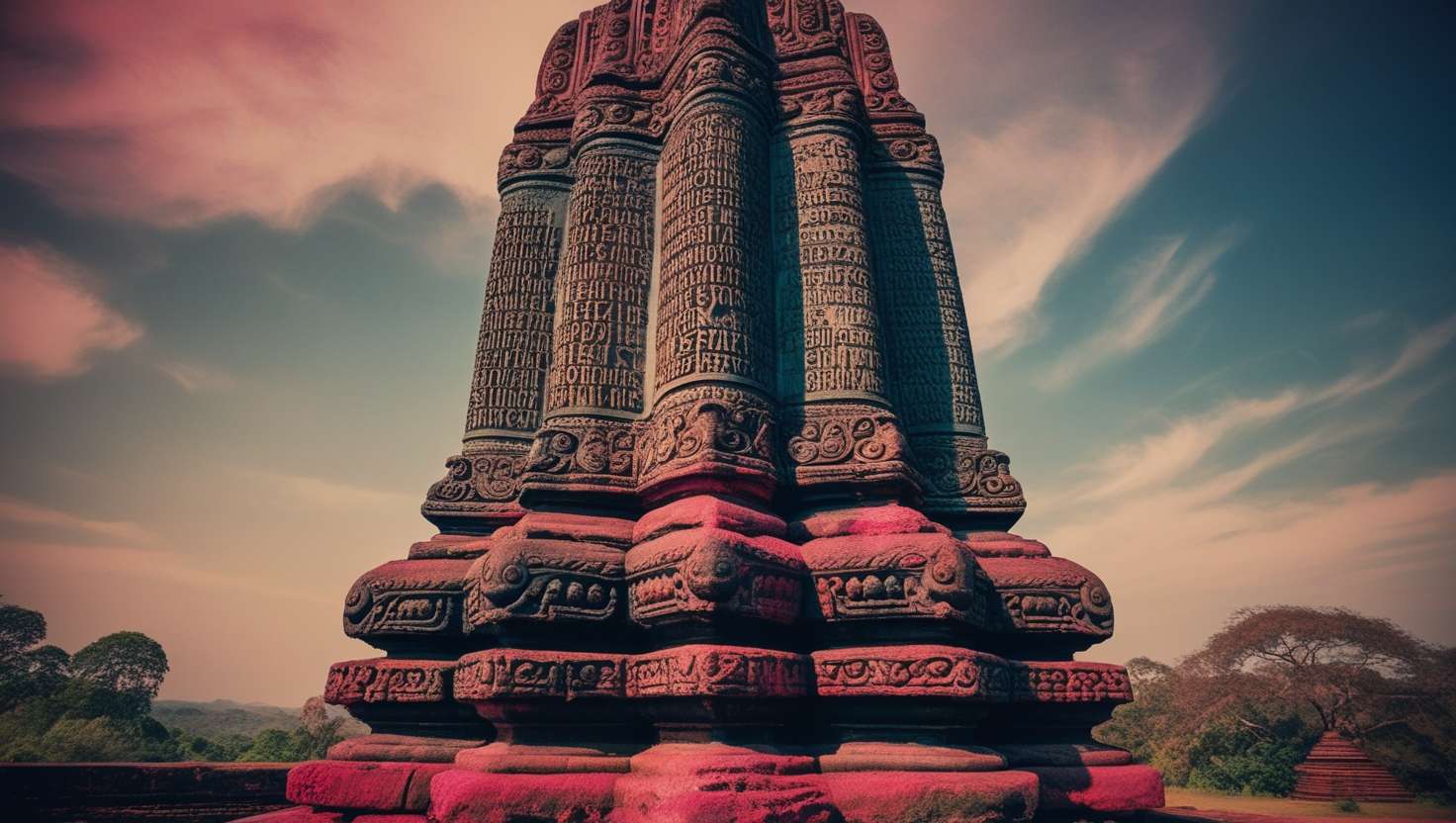The Mauryan Empire, spanning from approximately 322 BCE to 185 BCE, stands as one of ancient India’s most influential dynasties. Founded by Chandragupta Maurya and later expanded and consolidated by his grandson Ashoka, this empire covered a vast expanse including present-day India, Pakistan, Afghanistan, and parts of Iran.
Table of Contents
Toggle1. Origins and Expansion
Chandragupta Maurya, guided by his mentor Chanakya (Kautilya), established the Mauryan Empire after overthrowing the Nanda dynasty in Magadha (modern Bihar). This marked the beginning of a unified Indian state, consolidating power through strategic military campaigns that expanded territorial control and secured vital trade routes.
2.Chandragupta Maurya's Rule
Under Chandragupta’s leadership, the Mauryan Empire flourished as a centralized state with efficient administrative policies. The capital, Pataliputra, emerged as a center of governance, commerce, and cultural exchange. Chandragupta’s rule laid the foundation for a robust bureaucratic system and economic prosperity supported by agriculture and trade.
3. Ashoka: Transformation and Governance
Initially known for his military conquests and expansionist policies, Ashoka underwent a transformative journey following the bloody Kalinga War. Influenced by Buddhist teachings, Ashoka embraced principles of non-violence (Ahimsa), promoting social welfare, religious tolerance, and ethical governance through his renowned rock edicts.
4. Administrative Innovations
The Mauryan Empire introduced pioneering administrative practices, including a centralized government with provincial governors overseeing taxation, justice, and public works. This structured governance facilitated infrastructure development such as roads and irrigation systems, crucial for agriculture and commerce across the empire.
5. Cultural Flourishing and Artistic Achievements
During the Mauryan era, significant advancements in art, architecture, and literature enriched Indian culture. Pataliputra became a vibrant cultural hub, showcasing exquisite sculptures, palaces, and public buildings. Mauryan art, characterized by its realism and intricate detailing, influenced subsequent artistic traditions and reflected the empire’s diverse cultural influences.
6. Decline and Legacy
After Ashoka’s death, the Mauryan Empire faced challenges from weak successors and external invasions, leading to its gradual decline and eventual fragmentation. Despite its political decline, the Mauryan legacy endured through Ashoka’s edicts, which promoted moral values and governance principles that continued to resonate across Indian history.
7. Legacy of the Mauryan Empire
The legacy of the Mauryan Empire extends beyond its political and administrative achievements. One of the most enduring contributions of the Mauryan period was the spread of Buddhism under Ashoka’s patronage. As a devout follower of Buddhism, Ashoka promoted the teachings of Buddha throughout his empire and beyond. His missionaries traveled to neighboring kingdoms and distant lands, spreading the message of peace, tolerance, and ethical conduct.
The establishment of monastic institutions and support for Buddhist monks and scholars facilitated the growth of Buddhism as a major religion in India and beyond. The Mauryan Empire’s embrace of Buddhism not only influenced religious practices but also contributed to the development of Buddhist art and architecture. Stupas, such as the famous Sanchi Stupa commissioned by Ashoka, became centers of religious pilgrimage and artistic expression.
8. Economic Prosperity and Trade
Economically, the Mauryan Empire thrived due to its strategic location and efficient administration. The empire controlled key trade routes that facilitated commerce with Central Asia, the Mediterranean, and Southeast Asia. Pataliputra emerged as a cosmopolitan city where traders from distant lands converged to exchange goods such as silk, spices, ivory, and precious metals.
Under Chandragupta and Ashoka, the empire implemented policies to support agriculture, ensuring a stable food supply for its growing population. Irrigation projects, such as the construction of dams and canals, improved agricultural productivity in fertile regions along the Ganges River and its tributaries. The surplus agricultural produce not only sustained urban centers but also fueled economic growth through trade and commerce.
9. Art, Architecture, and Cultural Exchange
Art and architecture flourished during the Mauryan period, reflecting the empire’s cultural diversity and royal patronage. The capital city, Pataliputra, became a center of artistic innovation where skilled artisans crafted exquisite sculptures, pottery, and jewelry. Mauryan art is characterized by its realistic depictions of human figures and animals, often adorned with intricate designs and motifs.
The Mauryan rulers’ patronage of the arts extended beyond India’s borders, fostering cultural exchanges with neighboring regions and distant civilizations. Influences from Greek, Persian, and Central Asian art can be seen in Mauryan sculptures and architectural styles. The blending of artistic traditions contributed to the richness and diversity of Mauryan cultural heritage, leaving a lasting impact on subsequent artistic developments in India and beyond.
10. End of the Mauryan Empire
The decline of the Mauryan Empire began after Ashoka’s death and was accelerated by weak successors and external invasions. The empire’s vast territory became increasingly difficult to govern, leading to regional fragmentation and the rise of local kingdoms. The invasion of the Greek general Seleucus I Nicator and subsequent conflicts further weakened Mauryan authority in northwestern India.
By the mid-2nd century BCE, the Mauryan Empire had disintegrated, paving the way for regional powers such as the Shunga dynasty in central India and the Sunga dynasty in the north. Despite its eventual decline, the Mauryan Empire’s contributions to Indian civilization endured through its administrative innovations, cultural achievements, and the spread of Buddhism.
11. Mauryan Influence on Subsequent Dynasties
The Mauryan Empire’s influence on subsequent dynasties in India was profound. The administrative policies introduced by Chandragupta and refined by Ashoka served as a model for centralized governance and efficient bureaucracy. Successor empires such as the Gupta dynasty drew inspiration from Mauryan principles of administration, promoting economic prosperity and cultural flourishing during India’s classical age.
The legacy of Ashoka’s rock edicts, advocating for social justice, religious tolerance, and moral conduct, continued to resonate in Indian society and beyond. The principles of Dhamma propagated by Ashoka laid the foundation for ethical governance and the promotion of universal values that transcended religious and cultural boundaries.
Conclusion
In conclusion, the Mauryan Empire stands as a testament to India’s rich heritage of political ingenuity, cultural vibrancy, and spiritual enlightenment. From its humble beginnings under Chandragupta Maurya to its zenith under Ashoka, the empire encapsulated the aspirations of a unified and prosperous Indian subcontinent. Despite its eventual decline, the Mauryan legacy continues to inspire admiration for its administrative acumen, artistic brilliance, and commitment to moral governance.
The Mauryan Empire remains a pivotal chapter in world history, showcasing the transformative power of leadership, the resilience of cultural exchange, and the enduring quest for spiritual enlightenment. Its impact on subsequent dynasties and its contributions to global civilization underscore its rightful place as one of the greatest empires of ancient times.




0 thoughts on “The Rise of the Mauryan Empire: Ancient India’s Golden Age”